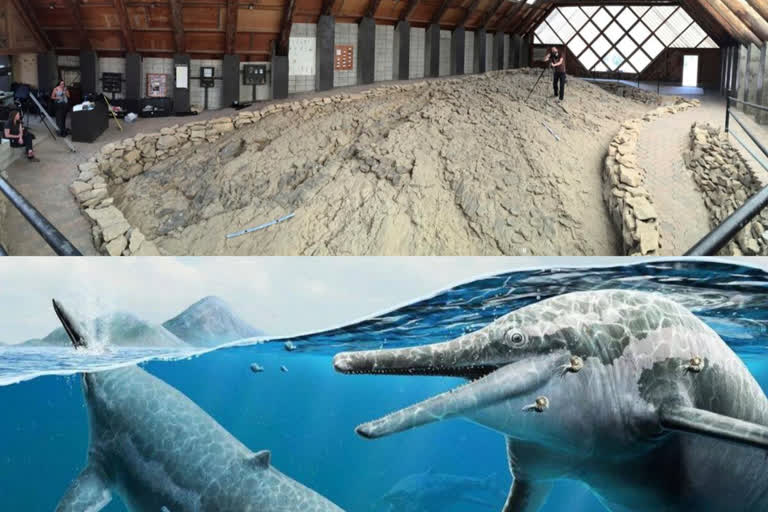New York: Scientists have uncovered new clues about a curious fossil site in Nevada, a graveyard for dozens of giant marine reptiles. Instead of the site of a massive die-off as suspected, it might have been an ancient maternity ward where the creatures came to give birth. The site is famous for its fossils from Giant Ichthyosaurs — reptiles that dominated the ancient seas and could grow up to the size of a school bus. The creatures — the name means fish lizard — were underwater predators with large paddle-shaped flippers and long jaws full of teeth.
Since the ichthyosaur bones in Nevada were excavated in the 1950s, many paleontologists have investigated how all these creatures could have died together. Now, researchers have proposed a different theory in a study published Monday in the journal Current Biology. “Several lines of evidence all kind of point towards one argument here: That this was a place where giant ichthyosaurs came to give birth,” said co-author Nicholas Pyenson, curator of fossil marine mammals at the Smithsonian National Museum of Natural History.
Once a tropical sea, the site — part of Nevada’s Berlin-Ichthyosaur State Park — now sits in a dry, dusty landscape near an abandoned mining town, said lead author Randy Irmis, a paleontologist at the University of Utah. To get a better look at the massive skeletons, which boast vertebrae the size of dinner plates and bones from their flippers as thick as boulders, researchers used 3D scanning to create a detailed digital model, Irmis said.
Also read:Changes in Earth's orbit may have triggered ancient warming event
